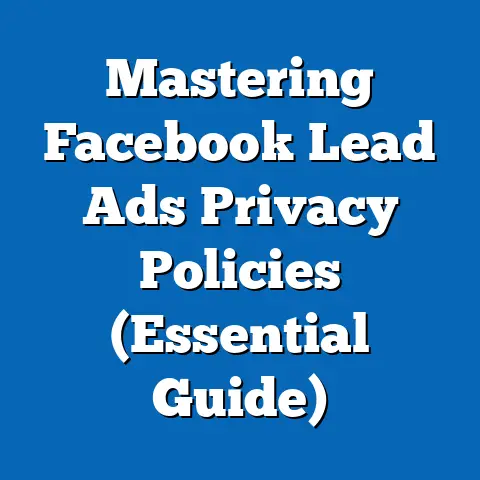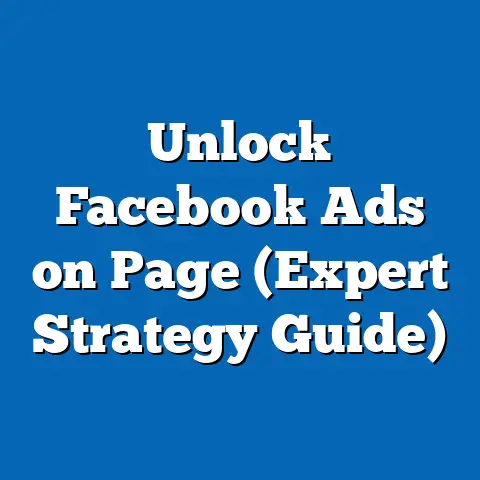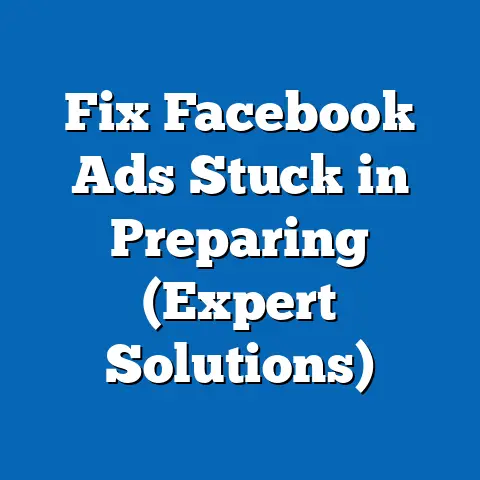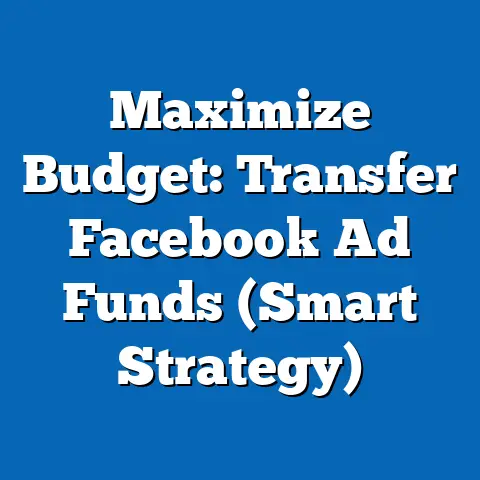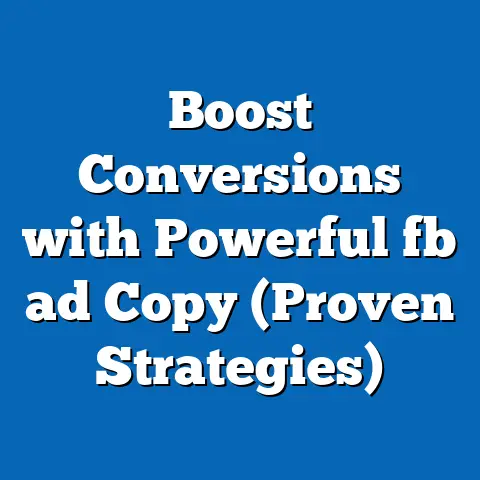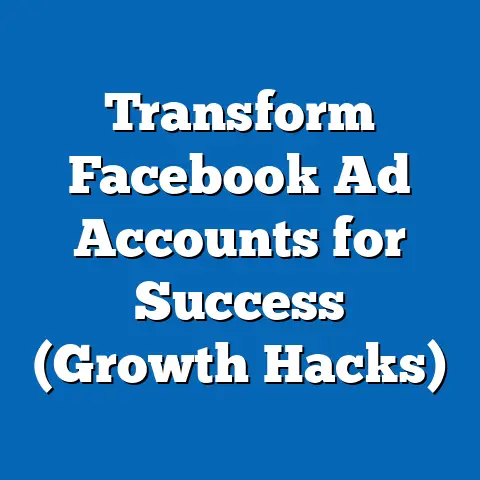Maximize Facebook Ads with Targeted Bot Traffic (Expert Tips)
Maximizing Facebook Ads with Targeted Bot Traffic: Expert Tips
Let’s be honest, in the noisy realm of digital marketing, making a genuine connection with your audience is like finding a quiet corner in a bustling city. It’s rare, but incredibly valuable. I’ve always believed that successful marketing isn’t just about reaching people; it’s about resonating with them. That’s where the concept of “warmth” comes in.
“Warmth” in marketing, to me, is all about creating a sense of connection, trust, and understanding with your audience. It’s about showing them that you get their needs, their pain points, and their aspirations. In the Facebook advertising landscape, where users are bombarded with countless ads every day, standing out requires more than just a catchy headline or a visually appealing image. It requires building a genuine connection.
This is where understanding the emotional and psychological aspects of marketing becomes crucial. People don’t buy products or services; they buy solutions to their problems, fulfillment of their desires, and alignment with their values. Your Facebook ads should speak to these deeper motivations, creating a sense of warmth that draws users in and makes them more receptive to your message.
Now, you might be wondering, “What does all this have to do with bot traffic?” Well, in the right context, targeted bot traffic can actually enhance this sense of warmth by providing valuable data and insights that allow you to refine your ad campaigns and better connect with your target audience. It’s not about tricking the system; it’s about using data intelligently to create more effective and engaging ads.
In this article, I’ll guide you through the process of maximizing your Facebook ads with targeted bot traffic, while always keeping the concept of warmth at the forefront. We’ll explore how to use this technique strategically, ethically, and effectively to achieve your marketing goals.
Understanding Targeted Bot Traffic
Okay, let’s get the elephant out of the room. When I talk about “bot traffic,” I’m not talking about the cheap, low-quality, spammy kind that can get your account banned. That’s a big no-no. What I’m referring to is targeted bot traffic, which is a completely different beast.
Targeted bot traffic is essentially simulated user activity designed to mimic real human behavior within specific parameters. Think of it as a carefully orchestrated experiment to test and optimize your ad campaigns. These bots are programmed to interact with your ads in specific ways, such as clicking on links, watching videos, or even filling out forms, all while adhering to pre-defined targeting criteria.
So, how does this differ from general bot traffic? General bot traffic is usually generated randomly and indiscriminately, often with malicious intent (like ad fraud). It provides no valuable data and can actually harm your ad performance. Targeted bot traffic, on the other hand, is controlled, focused, and designed to provide actionable insights.
Benefits of Using Targeted Bot Traffic
Now, let’s talk about the benefits. Why would you even consider using targeted bot traffic in the first place? Here are a few key reasons:
- Increased Engagement: By simulating user interactions, targeted bot traffic can artificially inflate your engagement metrics, such as likes, comments, and shares. This can create a “social proof” effect, making your ads appear more popular and trustworthy to real users.
- Improved Click-Through Rates (CTR): Bots can be programmed to click on your ads, driving up your CTR. A higher CTR signals to Facebook that your ads are relevant and engaging, which can improve your Quality Score and lower your ad costs.
- Enhanced Conversion Metrics: In some cases, targeted bot traffic can even be used to simulate conversions, such as form submissions or purchases. This can help you test your conversion funnels and identify areas for improvement.
- Reach Specific Demographics and Interests: Targeted bot traffic can be programmed to mimic the behavior of users within specific demographics and interests. This allows you to test how different audience segments respond to your ads and tailor your messaging accordingly.
I remember one campaign where I was struggling to get traction with a new product launch. I decided to use targeted bot traffic to simulate engagement within a specific niche audience. The results were surprising. The increased engagement not only boosted the ad’s visibility but also attracted real users who were genuinely interested in the product. It was like a snowball effect.
Scenarios Where Targeted Bot Traffic is Beneficial
Here are a few specific scenarios where targeted bot traffic can be particularly beneficial for Facebook ad campaigns:
- Testing New Ad Creatives: Before launching a new ad campaign, you can use targeted bot traffic to test different ad creatives (images, videos, headlines, etc.) and see which ones perform best.
- Optimizing Audience Targeting: You can use targeted bot traffic to test different audience segments and identify the ones that are most responsive to your ads.
- Improving Quality Score: By artificially inflating your engagement and CTR, targeted bot traffic can help you improve your Quality Score and lower your ad costs.
- Testing Conversion Funnels: You can use targeted bot traffic to simulate conversions and identify any bottlenecks in your conversion funnels.
Takeaway: Targeted bot traffic, when used ethically and strategically, can be a valuable tool for optimizing your Facebook ad campaigns. It’s not about cheating the system; it’s about using data intelligently to create more effective and engaging ads.
Setting Up Your Facebook Ads for Success
Before you even think about integrating targeted bot traffic into your Facebook ad strategy, you need to make sure your ads are set up for success. This means creating high-performing ads that are designed to resonate with your target audience.
Here are some essential steps to follow:
Crafting Compelling Ad Copy
Your ad copy is the first thing users will see, so it needs to grab their attention and pique their interest. Here are a few tips:
- Know Your Audience: Understand their needs, their pain points, and their aspirations. Speak directly to them in their language.
- Highlight the Benefits: Focus on the benefits of your product or service, not just the features. How will it make their lives better?
- Use Strong Verbs: Use action-oriented verbs that create a sense of urgency and excitement.
- Keep it Concise: People have short attention spans, so get to the point quickly.
- Include a Clear Call-to-Action (CTA): Tell users exactly what you want them to do (e.g., “Learn More,” “Shop Now,” “Sign Up”).
I’ve found that using storytelling in my ad copy can be incredibly effective. Sharing a personal anecdote or a customer success story can create a deeper connection with the audience and make your ad more memorable.
Designing Eye-Catching Visuals
Your visuals are just as important as your ad copy. They need to be visually appealing and relevant to your target audience. Here are a few tips:
- Use High-Quality Images and Videos: Avoid blurry or pixelated images. Invest in professional-quality visuals that showcase your product or service in the best light.
- Choose Relevant Visuals: Make sure your visuals are relevant to your ad copy and your target audience.
- Use Bright Colors: Bright colors can help your ads stand out in the newsfeed.
- Include a Human Element: Images of people can create a stronger connection with the audience.
I once ran a campaign where I used a series of visually stunning images of people using my product in different settings. The ads generated a huge amount of engagement and drove a significant increase in sales.
Selecting the Right Ad Format
Facebook offers a variety of ad formats, each with its own strengths and weaknesses. Here are a few popular options:
- Image Ads: Simple and effective for showcasing a single product or service.
- Video Ads: Great for telling a story and capturing attention.
- Carousel Ads: Allow you to showcase multiple products or features in a single ad.
- Slideshow Ads: Similar to video ads, but use a series of static images.
The best ad format for your campaign will depend on your goals and your target audience. Experiment with different formats to see what works best.
Utilizing Facebook’s Audience Targeting Tools
Facebook’s audience targeting tools are incredibly powerful. They allow you to target your ads to specific demographics, interests, behaviors, and more. Here are a few targeting options to consider:
- Demographics: Target users based on age, gender, location, education, and more.
- Interests: Target users based on their interests, such as hobbies, activities, and brands they follow.
- Behaviors: Target users based on their online behavior, such as purchase history and device usage.
- Custom Audiences: Upload your own customer data (e.g., email addresses, phone numbers) to create custom audiences.
- Lookalike Audiences: Create audiences that are similar to your existing customers.
I always recommend starting with a broad audience and then narrowing it down based on performance data. This allows you to identify the most responsive audience segments and focus your efforts on them.
Implementing A/B Testing
A/B testing is the process of testing different versions of your ads to see which ones perform best. This is an essential step in optimizing your ad campaigns. Here are a few things you can A/B test:
- Ad Copy: Test different headlines, descriptions, and CTAs.
- Visuals: Test different images and videos.
- Ad Format: Test different ad formats (e.g., image ads vs. video ads).
- Audience Targeting: Test different audience segments.
I recommend using Facebook’s built-in A/B testing tool to make the process easier. This tool allows you to create multiple versions of your ads and track their performance side-by-side.
Takeaway: Setting up your Facebook ads for success requires a combination of compelling ad copy, eye-catching visuals, the right ad format, precise audience targeting, and rigorous A/B testing. Once you have these elements in place, you’ll be ready to integrate targeted bot traffic into your strategy.
Integrating Targeted Bot Traffic into Your Strategy
Now that you have a solid foundation in place, let’s talk about how to integrate targeted bot traffic into your Facebook ad campaigns strategically.
Identifying the Right Sources for Targeted Bot Traffic
Not all bot traffic is created equal. You need to find reputable sources that provide high-quality, targeted bot traffic that mimics real human behavior. Here are a few factors to consider:
- Targeting Options: Does the source offer granular targeting options that align with your Facebook audience targeting?
- Geographic Location: Can you target bot traffic from specific geographic locations?
- Behavioral Patterns: Can you customize the behavioral patterns of the bots to mimic real user interactions?
- Transparency: Is the source transparent about its methods and practices?
- Reputation: Does the source have a good reputation in the industry?
I’ve found that working with specialized bot traffic providers is often the best option. These providers have the expertise and technology to deliver high-quality, targeted bot traffic that can actually improve your ad performance.
Techniques for Integrating Bots into Ad Funnels
Integrating bots into your ad funnels requires a delicate touch. You don’t want to overwhelm the system or create a negative user experience. Here are a few techniques to consider:
- Start Small: Begin with a small amount of bot traffic and gradually increase it over time.
- Diversify Your Traffic Sources: Don’t rely solely on bot traffic. Mix it with organic traffic and paid traffic from other sources.
- Monitor Your Metrics Closely: Keep a close eye on your engagement, CTR, and conversion metrics. If you see any sudden or unexpected changes, adjust your strategy accordingly.
- Avoid Over-Optimization: Don’t try to game the system too much. Focus on creating genuine engagement and providing value to your target audience.
I once made the mistake of flooding my ad campaign with too much bot traffic too quickly. The result was a sudden spike in engagement that looked suspicious to Facebook’s algorithm. My ad account was temporarily suspended, and I had to spend hours explaining the situation to Facebook’s support team. Lesson learned: moderation is key.
The Role of Analytics in Tracking Bot Traffic Performance
Analytics are crucial for tracking the performance of your bot traffic and ensuring that it’s actually improving your ad campaigns. Here are a few key metrics to monitor:
- Engagement Rate: Track the number of likes, comments, and shares generated by bot traffic.
- Click-Through Rate (CTR): Track the CTR of your ads with and without bot traffic.
- Conversion Rate: Track the conversion rate of your ads with and without bot traffic.
- Quality Score: Monitor your Quality Score to see if bot traffic is improving it.
- Cost Per Click (CPC): Track your CPC to see if bot traffic is lowering it.
I recommend using Facebook’s built-in analytics tools to track these metrics. You can also use third-party analytics platforms like Google Analytics to get a more comprehensive view of your ad performance.
Case Studies: Successful Campaigns
Let’s look at some examples of successful campaigns that have effectively used targeted bot traffic to enhance their outcomes.
- Example 1: E-commerce Brand
An e-commerce brand selling handmade jewelry used targeted bot traffic to increase engagement on their Facebook ads. They programmed bots to like, comment, and share their ads within specific niche communities interested in fashion and accessories. The increased engagement created a social proof effect, attracting real users who were more likely to purchase the jewelry.
- Example 2: SaaS Company
A SaaS company used targeted bot traffic to test different ad creatives and optimize their audience targeting. They programmed bots to click on their ads and fill out lead generation forms, simulating different user personas. By analyzing the data generated by the bots, they were able to identify the most effective ad creatives and audience segments, resulting in a significant increase in leads.
Takeaway: Integrating targeted bot traffic into your Facebook ad strategy requires careful planning, execution, and monitoring. By identifying the right sources, integrating bots strategically, and tracking your performance closely, you can use this technique to enhance your ad campaigns and achieve your marketing goals.
Measuring Success and Optimizing Campaigns
You’ve implemented targeted bot traffic, now what? It’s time to measure your results and optimize your campaigns for maximum ROI.
Key Performance Indicators (KPIs) to Monitor
Here are the key performance indicators (KPIs) you should be monitoring to assess the effectiveness of your Facebook ads when using targeted bot traffic:
- Return on Ad Spend (ROAS): This is the most important KPI. It measures the amount of revenue you generate for every dollar you spend on advertising.
- Cost Per Acquisition (CPA): This measures the cost of acquiring a new customer through your Facebook ads.
- Conversion Rate: This measures the percentage of users who take a desired action, such as making a purchase or filling out a form.
- Engagement Rate: This measures the level of interaction your ads are receiving, such as likes, comments, and shares.
- Click-Through Rate (CTR): This measures the percentage of users who click on your ads.
- Quality Score: This measures the relevance and quality of your ads.
I always recommend setting clear goals for your KPIs before you start your ad campaigns. This will help you track your progress and identify areas for improvement.
Interpreting Data and Making Data-Driven Decisions
Interpreting data is crucial for making informed decisions about your ad campaigns. Here are a few tips:
- Look for Trends: Don’t focus on individual data points. Look for trends over time.
- Compare Performance: Compare the performance of your ads with and without bot traffic.
- Segment Your Data: Segment your data by audience, ad creative, and other factors to identify the most effective strategies.
- Use A/B Testing: Continue to A/B test different elements of your ads to optimize your performance.
I’ve found that using data visualization tools can be incredibly helpful for interpreting data. Charts and graphs can make it easier to identify trends and patterns.
Adjusting Ad Strategies Based on Performance Metrics
Based on your performance metrics, you may need to adjust your ad strategies. Here are a few things you can do:
- Adjust Your Audience Targeting: If you’re not reaching the right audience, try narrowing your targeting criteria.
- Change Your Ad Creatives: If your ads aren’t generating enough engagement, try changing your ad copy or visuals.
- Optimize Your Bidding Strategy: If your CPA is too high, try adjusting your bidding strategy.
- Pause Underperforming Ads: If an ad is consistently underperforming, pause it and focus on optimizing your better-performing ads.
I once had a campaign where my CPA was consistently too high. I decided to analyze my data and discovered that certain audience segments were performing much better than others. I adjusted my targeting to focus on those segments, and my CPA dropped dramatically.
Takeaway: Measuring success and optimizing your Facebook ad campaigns is an ongoing process. By monitoring your KPIs, interpreting your data, and adjusting your strategies accordingly, you can maximize your ROI and achieve your marketing goals.
Conclusion
In conclusion, maximizing your Facebook ads with targeted bot traffic requires a strategic approach that combines emotional engagement with technological advancements. By understanding the concept of warmth in marketing and using targeted bot traffic ethically and effectively, you can enhance your ad campaigns and achieve your marketing goals.
Remember to:
- Craft compelling ad copy that resonates with your target audience.
- Design eye-catching visuals that capture attention.
- Utilize Facebook’s audience targeting tools to reach the right people.
- Implement A/B testing to optimize your ad performance.
- Integrate targeted bot traffic strategically and monitor your results closely.
- Measure your success and adjust your strategies based on your performance metrics.
I encourage you to experiment with the strategies discussed in this article and explore the potential of combining emotional engagement with technological advancements to achieve your marketing goals. The world of Facebook advertising is constantly evolving, so it’s important to stay curious, keep learning, and always be willing to try new things.
And don’t forget, warmth is key. By creating a genuine connection with your audience, you can build trust, foster loyalty, and ultimately drive better results with your Facebook ad campaigns. Good luck!

